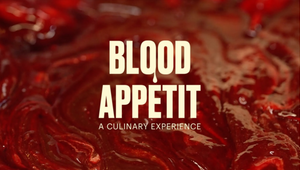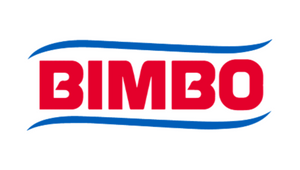
How SKITTLES Brought Back ‘Lime’ with an Apology Press Conference

Dubbed ‘#greenapplegate’, the changing of the green Skittle from lime to green apple caused a significant uproar from the candy icon’s lime-lovers in 2013. Ever since that fateful transition, SKITTLES has been on the receiving end of a dedicated lime-avenging online campaign via social media, with people demanding the original flavour be restored. Nine years on, DDB Chicago has helped facilitate the grand return of the ‘Lime Skittle’ with a livestreamed press conference that saw a SKITTLES ‘spokesperson’ apologise for the change, one tweet at a time.
Livestreaming the apologies on the Twitch platform, the list of people to apologise to was curated from the over 130,000 tweets that SKITTLES has received regarding the flavour change over the last decade. Reading tweet after tweet and saying sorry to every slighted individual, the ‘spokesperson’ for SKITTLES maintained a sincere and forcibly corporate tone in his delivery for over half an hour, even using an old-fashioned overhead projector at one point to break up the long list of sorries.
To discuss how this tongue-in-cheek parody of celebrity and corporate apology videos was created, LBB’s Ben Conway spoke with DDB Chicago’s global strategy director Josh Drueck, global brand lead Jasmine Jabbour, executive creative director, Colin Selikow and executive producer, Annie Larrimer.
LBB> Where did the initial creative spark for this campaign come from? Did SKITTLES have a brief or did you approach them with the idea?
Josh> The lime-lover angst had been brewing for years – since #greenapplegate in 2013, seemingly every social post from the brand has been co-opted by people expressing their displeasure or desire to bring back the lime flavour. They’ve made memes. They’ve mobilised Facebook groups. They’ve created Change.org petitions. So we always sort of assumed this day was coming!
Jasmine> We tapped into our DDB digital experts and did a social audit to find the 130,880+ tweets that mentioned lime being taken away!
Josh> The idea itself came pretty organically as a reaction to this insane commitment and just how personally all these lime lovers had taken things. We knew we needed to make amends with them, so the concept of an ‘apology’ was top of mind. Of course, when you’re SKITTLES and your superpower is upending common sense with absurdity, you can’t just offer a boilerplate corporate mea-culpa and call it a day. But the ‘formula’ of the traditional corporate apology – where it lives, what it sounds like, how shallow and impersonal and performative it often feels – was the perfect foil.
LBB> Where did the press conference idea come from and why was this style chosen over other apology videos and approaches?
Colin> There’s a kind of apology wave that’s hitting right now. From brands to celebrities, we see these public apologies all over media and social. One thing they all have in common is that they come across as insincere and forced. And the one trope that keeps coming up is the press conference - these staged, scripted and legally mandated shows of contrition. That seemed like the perfect vehicle to mess with. To use it in such a specific and ridiculous way that it shone a light both on how many people actually loved lime, and also how hollow these things typically are.
LBB> When and why was it decided that the conference should be livestreamed? What did this add to the campaign?
Colin> Having it livestreamed just added to the authenticity. It showed that this was real and actually happening. Some of the imperfections in the delivery that you can only get live also add to that authenticity. It also allowed people to comment and see others’ comments on Twitch, which is such a great way for the lime community to see themselves singled out and apologised to, and also see how big a community of offended lime lovers there are out there.
And it’s also just an inherently more interesting headline – that SKITTLES was apologising to literally everyone they offended, individually, via a 35-minute live event.

LBB> Do you have any data you can share regarding the viewership and average watch time for the stream - both for the live stream and for subsequent YouTube/social media engagement?
Josh> For the livestream itself, we saw more than 136,000 unique viewers on Twitch - which was a new benchmark for Mars. We’ve got more than 24,000 comments on the content on TikTok alone. And we’ve definitely seen a spike in Lime Skittles conversation and search behaviour since launch. The response from our lime-lovers has been overwhelmingly positive – so we feel like at least most of them have accepted our apology!
LBB> Who did you work with on the production for the conference? What did you learn from the experience?
Annie> We partnered with directors Fatal Farm to create the most authentic corporate apology ‘set’ possible – a real hotel conference room that felt cavernous, with horrible carpeting, and an overhead projector. The production team really embraced the challenge of filming something over 30 minutes in length with multiple gags and coordinated everything as if it was an (awkward) ballet. Twitch was new to me. As I learned more, it felt like the perfect platform for us. As it aired, watching the comments roll in from delighted viewers – that was super gratifying.
Colin> The comments and chat were a huge part of the experience. Not only watching all these people get apologised to, but seeing them react to it in real-time made the whole apology so much more personal. And given how vitriolic a place the internet can often be, it was amazing to see how positive the conversation actually was.
LBB> Did you collate all of the tweets? How was the process of finding and organising everything for the spokesperson to apologise for?
Jasmine> Yes, we absolutely did. This was a challenging, but worthwhile process as these tweets were the crux of the campaign – they were the basis for the content we would create. We worked closely with Twitter throughout the entire process. It went on for months and kicked off as soon as the idea got the green light because we knew we needed to scrub the then spend time reaching out to everyone.
It really was a mass team effort that saw all departments come together to ensure it was done creatively and as efficiently as possible so that our spokesperson had all the tweets ready to read during filming. After auditing and gathering 130k+ tweets, we put out a paid tweet that called for those we wronged to opt-in and get their apology, publicly. From there, the DDB and Mars teams worked incredibly close on filtering through, bucketing the tweets into themes where possible and let’s just say, there were many, many spreadsheets. It’s not often Excel gets used this often in creative development!
Eventually, we got to a really healthy list that our spokesperson was able to apologise to, individually, in the 30-minute press conference as well as calling out the handles of those whose tweets weren’t read out but were also wronged by lime being taken away.
LBB> The sincerity and seriousness of the conference is really what makes it so funny - how did you decide to take this approach and what aspects did you create to maintain this tone?
Colin> We went through a ton of press conferences and pulled apart many of the clichés. We then used those to make ours seem both of that world - and also make fun of that world in a very SKITTLES way. The airport hotel meeting room with bad carpet, the cheap table and folding chairs, the sparsely populated press section and the branded backdrop all combine to make it feel like a real press event. Then, when you realise that something is different and this middle manager is actually apologising to 130,000 people individually, it makes it feel so much more unexpected.
LBB> How did you keep the press conference entertaining and varied throughout the 35 minutes? Where did the idea for using the old-fashioned overhead projector come from?
Colin> We have to give credit to our lime-loving consumers who created all these tweets. So much of the humour comes from the passion and anger that they wrote into these tweets. We just created a forum to bring it to the surface. The Lime Skittle lovers brought so much creativity and humour to their tweets over the nine years that we just had to get out of the way and let that shine. The overhead projector just seemed like such an absurd SKITTLES thing to do. Using this antiquated piece of tech to display the most modern form of communication just seemed hilarious. It also allowed Jeff a piece of physical humour to break up the reading, to keep it interesting visually and give people a reason to keep watching.
LBB> Were you involved in the casting process? How did you react to seeing the ‘spokesperson’ playing his role for the first time?
Colin> Casting was pretty rigorous. We needed someone with amazing improv skills to handle a live event of this length. Interestingly enough, our first choice cast contracted covid the day before and had to cancel, so Jeff was actually our backup. But he could not have been more perfect. He was amazing. From the first time he sat down and read a tweet awkwardly (as if corporate were forcing him to do this) we knew we had something.
LBB> What was the hardest challenge you face on this project and how did you overcome it?
Jasmine> I’d say it was maintaining the authenticity of this campaign. At its core, this was a true corporate apology where SKITTLES, a mass confectionary brand, was being asked to call out their wrongs and face them head-on. Sometimes uncomfortably, depending on the tweets we were responding to. It’s certainly not easy to ask a brand to confront their wrongs in such an open way and it can be intimidating to acknowledge messages from people vocalising negative thoughts about your product, but through our strong partnership and trust, we were able to get this done.
We have an incredible team at Mars who puts so much faith into the DDB team and believes in creative excellence. So while we faced such challenges, our team internally and externally never strayed from believing in the strength of this campaign - if done authentically and genuinely. That’s ultimately what allowed us to overcome all challenges.
LBB> Is a livestreamed event like this something you’d like to repeat in the future? What have you taken from this experience into future projects?
Colin> The live element was such a huge part of the authenticity of this campaign. And people respond to authenticity. They expect it from their brands. The honesty, openness and culpability we demonstrated really hit with people. Using livestreaming was the perfect expression of this particular idea, but looking forward, I think being genuine and open with our consumers is something incredibly powerful for brands.















